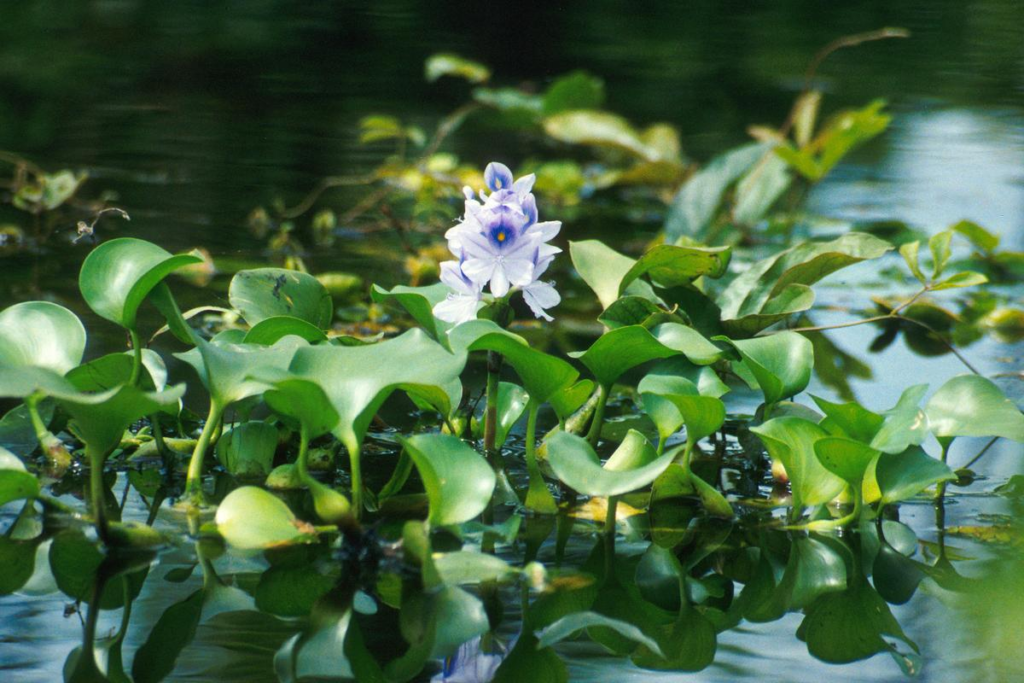Upsc Relevance – prelims-invasive species,mains-GS paper-3 environment and ecology
Why in News
India faces a growing threat from invasive alien species (IAS)—non-native plants, animals, and pathogens that disrupt ecosystems, threaten native biodiversity, and impact livelihoods. With 139 established IAS, including terrestrial and aquatic species, these “stealth invaders” are causing ecological imbalance, escalating human-wildlife conflicts, and inflicting economic losses. Recent studies emphasize the urgent need for parallel research and conservation efforts, policy action, and stakeholder engagement to manage this complex challenge.

Background
Definition and Legal Context
- IAS: Non-native organisms introduced outside their natural habitat, which survive, thrive, and outcompete native species (CBD definition).
- India: Wildlife Protection Act, 1972 (amended 2022) defines IAS as species threatening wildlife or habitats.
- Naturalised species: Alien species sustaining self-replacing populations without human intervention.
Global Significance
- IAS are one of the five major drivers of biodiversity loss, alongside land-use change, direct exploitation, climate change, and pollution.
- Approximately 37,000 alien species exist worldwide, with ~3,500 causing ecological or economic harm.
Historical Context in India
- Many IAS were introduced during colonial times, e.g., Lantana camara and Prosopis juliflora, initially for ornamental or soil stabilization purposes.
- Aquatic invasives entered India via aquaculture, aquarium trade, mosquito control, and sport fishing.
Examples of Invasive Species
- Terrestrial: Lantana camara, Prosopis juliflora
- Aquatic: Water hyacinth, alligator weed, duckweed, Red-eared slider, African catfish, Nile tilapia, red-bellied piranha, alligator gar
- Crop pests: Cotton mealybug causing yield losses in Deccan region
- Impact: Displacement of native species, altered predator-prey dynamics, habitat degradation
Challenges Posed by IAS
1. Terrestrial Ecosystems (Soil & Wildlife)
- Lantana camara: Unpalatable for elephants, forcing them toward cash crops → increased human-animal conflicts.
- Prosopis juliflora: Consumes excessive water, degrades grasslands, causes salt-water intrusion, stresses wildlife, disrupts traditional pastoralist networks.
- Ecosystem Impact: Habitat fragmentation, predator-prey imbalance, reduced grazing resources.
2. Aquatic Ecosystems
- Dominant invasive plants: Water hyacinth, alligator weed, duckweed, water lettuce
- Impacts: Blocks sunlight, reduces oxygen, threatens 1,070 freshwater fish species
- Aquatic alien fish widespread across India, from Dal Lake (Kashmir) to lakes in Telangana and Kerala
3. Economic and Livelihood Impacts
- IAS threaten agriculture, forestry, fisheries, and livelihoods, especially in developing regions
- Estimated economic losses in India: USD 182.6 billion
- Global annual cost: USD 423 billion
4. Amplifying Factors
- Climate change, pollution, habitat loss, and human disturbances worsen IAS impacts
- IAS linked to SDG 15 (Life on Land), threatening food security, health, and ecosystems
5. Poor Documentation and Research Gaps
- Lack of comprehensive data on invasion history, distribution, and ecological impacts
- Freshwater invasion biology is still nascent in India
- IAS affect:
- Species level: Survival, reproduction, local extinction
- Population level: Size, genetic diversity, community composition
- Ecosystem level: Soil, water quality, nutrient cycling, food webs, energy transfers
Conservation Dilemma
- Question: Wait to document all effects of IAS or act concurrently?
- Consensus: Waiting is impractical; parallel documentation and conservation is necessary
- Use global knowledge for immediate action while conducting localized impact studies
- Develop standardized quantitative methods to map cumulative effects, prioritize species and hotspots
- Engage diverse stakeholders: researchers, local communities, policymakers, and farmers
Management Initiatives
Global Level
- Convention on Biological Diversity (CBD), Article 8(h): Prevent, control, or eradicate IAS
- Kunming-Montreal Global Biodiversity Framework: Reduce IAS impacts by 50% by 2030
- IUCN Invasive Species Specialist Group (ISSG): Global database and management support
India-Specific
- National Biodiversity Action Plan (NBAP), Target 4: Prevention and management of IAS
- National Action Plan on Invasive Alien Species (NAPINVAS): Early detection, prevention, control, and management
- National Invasive Species Information Center (NISIC): Awareness and information dissemination
- Plant Quarantine (Regulation of Import into India) Order, 2003: Prevent introduction via imports
Way Forward
- Prioritization: Identify high-impact species and vulnerable ecosystems
- Integrated Management: Combine terrestrial and aquatic strategies
- Stakeholder Engagement: Involve local communities, researchers, and policymakers
- Monitoring & Research: Long-term studies and standardized impact assessment
- Policy & Enforcement: Strengthen regulations for prevention, control, and eradication
Conclusion
Invasive alien species are a multidimensional threat to India’s biodiversity, economy, and human well-being. Delays in action or poor documentation allow “stealth invaders” to cause irreversible ecological damage. An evidence-based, proactive, and inclusive approach—combining research, policy, and stakeholder engagement—is essential to protect India’s natural heritage and ensure sustainable ecosystem management.
UPSC Prelims Practice Questions – Invasive Alien Species (IAS)
Q1.Which of the following statements is/are correct regarding invasive alien species in India?
- Lantana camara was introduced in India during the British colonial period as an ornamental shrub.
- Prosopis juliflora was introduced to combat soil salinisation in Gujarat’s Banni grasslands.
- Water hyacinth is considered one of the worst invasive aquatic plants globally.
- Freshwater invasion biology is a well-established discipline in India with comprehensive data on all invasive species.
Options:
A. 1, 2 and 3 only
B. 1 and 4 only
C. 2, 3 and 4 only
D. All of the above
Answer: A. 1, 2 and 3 only
Q2.Consider the following impacts of invasive alien species:
- Displacement of native species and habitat alteration.
- Improved soil fertility and nutrient cycling in native ecosystems.
- Disruption of predator-prey relationships.
- Increased human-wildlife conflicts due to altered animal movement.
Which of the above are correct effects of invasive alien species?
Options:
A. 1, 2 and 3 only
B. 1, 3 and 4 only
C. 2 and 4 only
D. All of the above
Answer: B. 1, 3 and 4 only
Q3. Assertion (A): Parallel documentation and conservation is considered better than waiting for complete data before acting on invasive alien species.
Reason (R): Waiting for full documentation allows invasive species to spread and cause irreversible damage.
Options:
A. Both A and R are true, and R is the correct explanation of A.
B. Both A and R are true, but R is not the correct explanation of A.
C. A is true, but R is false.
D. A is false, but R is true.
Answer: A. Both A and R are true, and R is the correct explanation of A.
UPSC Mains Practice Questions
Q1. “Invasive alien species pose a serious threat to India’s biodiversity, economy, and ecosystem services.” Critically discuss, highlighting challenges and conservation strategies. (150–200 words)
